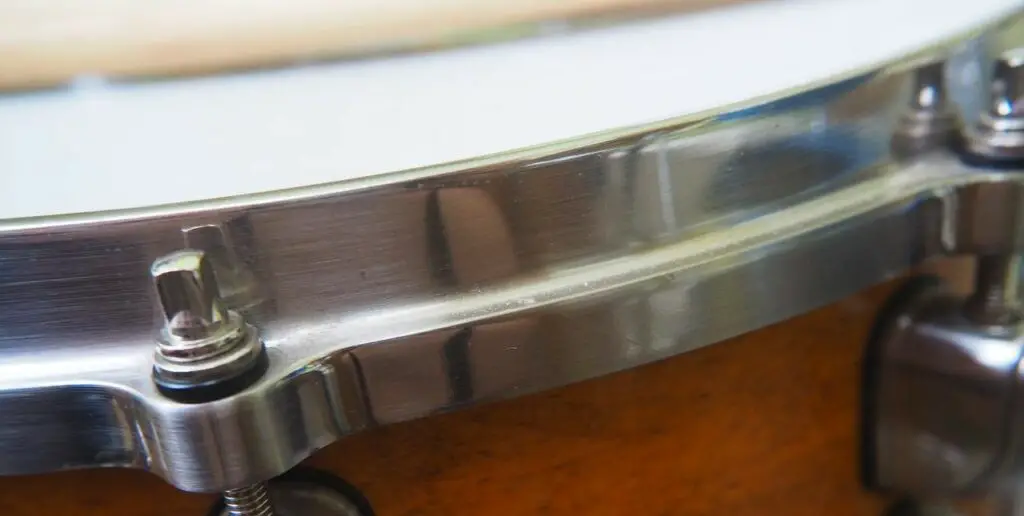Drums take up a lot of space, which can be especially inconvenient if they are just being stored. In this article I’ll be addressing the age old question, is is okay to stack drums on top of each other to save space when storing them?
Can You Stack Drums?
Stacking drums should not cause damage to them as a temporary measure to save space. However, if too many drums are stacked on top of each other, or left for several months at a time then it can cause the head to stretch and detune the drum.
Stacking toms is unlikely to cause damage, however stacking loads of toms on a bass drum can put the bass drum under a lot of pressure. This can in rare cases cause the shell to warp, especially if the tension is too high so avoid placing too many toms on top of the bass drum if possible.

Does Stacking Drums Cause them to Detune?
The issue with stacking drums on top of each other is that it can cause them to detune. Since there is pressure on the batter head from the weight of the drum sitting on top, this can cause some stretching and detune the drum.
This is not usually an issue if you are stacking them for a few days, but if you stack them for several weeks or months then the chances are you will need to tune them again.
If you’re not sure how to tune your drums, check out this YouTube video.
If you want to reduce the risk of the drums detuning when stacking them, then you can place either some plywood or cardboard between the drums. This will take some pressure off the head and place it more on the hoop.
As long as the hoop is structurally sound and of good quality, this should not cause any issues as the drums don’t weigh that much. You just need to make sure they are not resting on the tension rods instead as this can cause issues.
An even better option is to use an old drum head that you no longer use if you have one to hand as this will match the shape exactly whilst still taking pressure off the head underneath.
How to Stack Drums
The most common way to stack drums is by placing the bass drum at the bottom of the stack and the toms on top. The drums should be stacked with the largest drum at the bottom and the smallest drum at the top.
Where possible, no more than 4 drums should be stacked on top of each other. This reduces the risk of them all toppling over, and means the bass drum is not stressed too much.
You should also stack the toms with the resonant head facing upwards (the bottom side that you don’t strike) so the weight is not placed on the side that you are striking.
If the drums are the same size then you should try and switch the order of the stack at least weekly in order to ensure that the bottom drums are not put under too much weight for a prolonged period of time. This will reduce the risk of detuning and over-stretching.
As I mentioned above, you can also use plywood, cardboard or an old drum head in between each drum in the stack to take the pressure off the heads. However, you should only do this if the hoop is off good quality and structurally sound otherwise it can get damaged.
You should also make sure that the drums are not exposed to excessive heat, humidity or frequently and rapid temperature changes as this can damage the drums permanently. It’s recommended that the drums are stored indoors in a heat/ humidity controlled environment as opposed to in a garage.
It’s also recommended to clean the drums first before you stack them. This ensures that there is no debris that could potentially cause pitting or other forms of damage due to the weight of the drum on top.
Using Hard Cases is the Best Option
Stacking drums is okay if you use the best practices, however for long-term storage, hard cases are the best option. This is the best way to protect the drum to prevent it from warping. They also come in very handy if you ever want to transport your drums.
Of course, the obvious disadvantage here is that the cases take up extra space, but it is really the best option if you want to store or transport your drums with minimal risk of damage.
